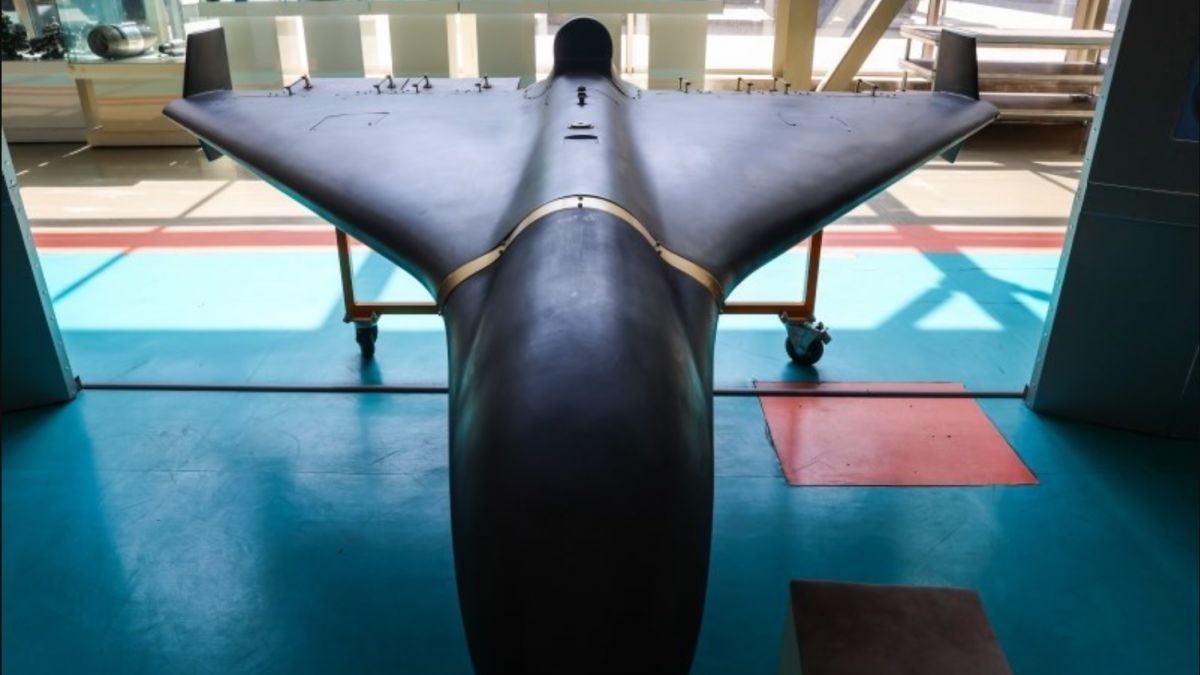Shahed jets: is it possible to intercept them and how much will it cost Ukraine?
1 August 18:45
The War Zone reports that Russia has begun using a new modification of Iranian Shahed drones – with jet engines. Due to their much higher speed and altitude, these drones are becoming much more difficult targets for Ukrainian air defense.
Analysts say that Ukraine currently has no cheap and effective means of countering such UAVs, so it may have to use expensive anti-aircraft missiles, which can cost millions of dollars per unit, to destroy them.
In the new modification, the drones can climb to an altitude of more than 9,000 meters and fly at speeds of up to 600 km/h, compared to standard Shaheds that can only reach 180 km/h. These characteristics make them almost unattainable for mobile anti-aircraft units and interceptor drones.
So far, there is no accurate information on the production volumes of these new models in Russia. Currently, it produces up to 2,000 conventional Shaheds per month and plans to increase this number to 5,000. However, jet modifications are much more difficult to manufacture and more expensive to produce.
At the same time, the question remains whether Ukraine will be able to create affordable technology to effectively intercept new drones in order to reduce costs and avoid depleting air defense systems.
The "Komersant Ukrainian" journalists talked about this with two leading military experts: Roman Svitan, a colonel in the reserve of the Armed Forces of Ukraine, and Ivan Stupak, an analyst and former SBU officer.
Flying fast and high, but visible: what is known about the new Shahed
According to reserve colonel, pilot instructor and military expert Roman Svitan, Shahed jets can reach an altitude of 5-7 kilometers and accelerate up to 600 km/h:
“Conventional drones with an internal combustion engine operate unstably at an altitude of more than 4 kilometers. A jet engine is stable. This is a plus for them. But because of the powerful heat trail, they are better visible, which makes it possible to intercept them with missiles with heat-seeking homing heads.”
Svitan emphasizes that even such drones can be shot down – the main thing is to have the right missiles:
“They can be intercepted not only by expensive missiles costing millions, but also by relatively cheap ones. For example, with Soviet P-73s or American AM-9 AMRAAMs or British Ashram missiles.”
However, effective defense requires mass production of cheap weapons:
“We need to bring the cost of a missile to the level of Shahed, up to $50 thousand. This is possible if we produce missiles with a thermal warhead on our own base. Such missiles are simpler, because Shahed is not a maneuvering target.”
According to the expert, it is even easier to destroy a jet drone than a classic Geranium:
“It cannot be reached by light aircraft or mobile groups – only by missiles or fighters. But as a target, it is less complicated: it does not maneuver, does not change course, it just flies. This makes it vulnerable.”
The problem is large-scale production in Russia and China
Svitan also points out that these drones are no longer Iranian, as they used to be:
“This is now a Russian-Chinese production. China provides spare parts, and Russia assembles them. And the problem is that the Chinese can scale up the production of anything – and quickly.”
At the same time, former SBU officer and military analyst Ivan Stupak urges not to jump to conclusions:
“We don’t know the exact number yet. They say 8, or maybe 88 or 188. After the attacks, experts collect the debris, study it and only then draw conclusions. It takes time to analyze.”
According to Stupak, this type of drone is a hybrid between drones and cruise missiles:
The analyst emphasizes that for effective counteraction, Ukraine must develop its own electronic surveillance equipment and cheap missiles:
“We need to know exactly where the drone is flying from, at what altitude, and at what speed. And only then – to destroy it. We also need inexpensive missiles – $5-6 thousand each, so as not to spend expensive systems.”
Russia’s capabilities
According to Stupak, a conventional Shahed has a cost of about €50,000, although Russia is planning to spend up to €200,000:
“They have the resources. But the question is how massively they will be able to produce such sophisticated drones. If it’s just an experimental batch, it’s easier for us. If not, we need to act very quickly.”
Shahed jets are a new level of drone threat in the Russian-Ukrainian war. They are faster, taller, and harder to detect. At the same time, they are also less maneuverable, which opens up opportunities for their effective destruction if appropriate weapons are used.
The main problem is the cost of counteraction. Shooting down Shahed with missiles costing millions of dollars is irrational. Ukraine needs cheap but effective solutions, both in terms of production and use. The best option would be to create our own production of heat-seeking missiles.
In addition, we need to rapidly build up our surveillance, coordination, and destruction infrastructure to respond to new types of threats. And the main thing is not to panic: the situation is under control if there is a timely technical and strategic response.
If Ukraine quickly adapts to the new conditions, the massive use of Shahed jets will simply lose its meaning for Russia and its partners.









